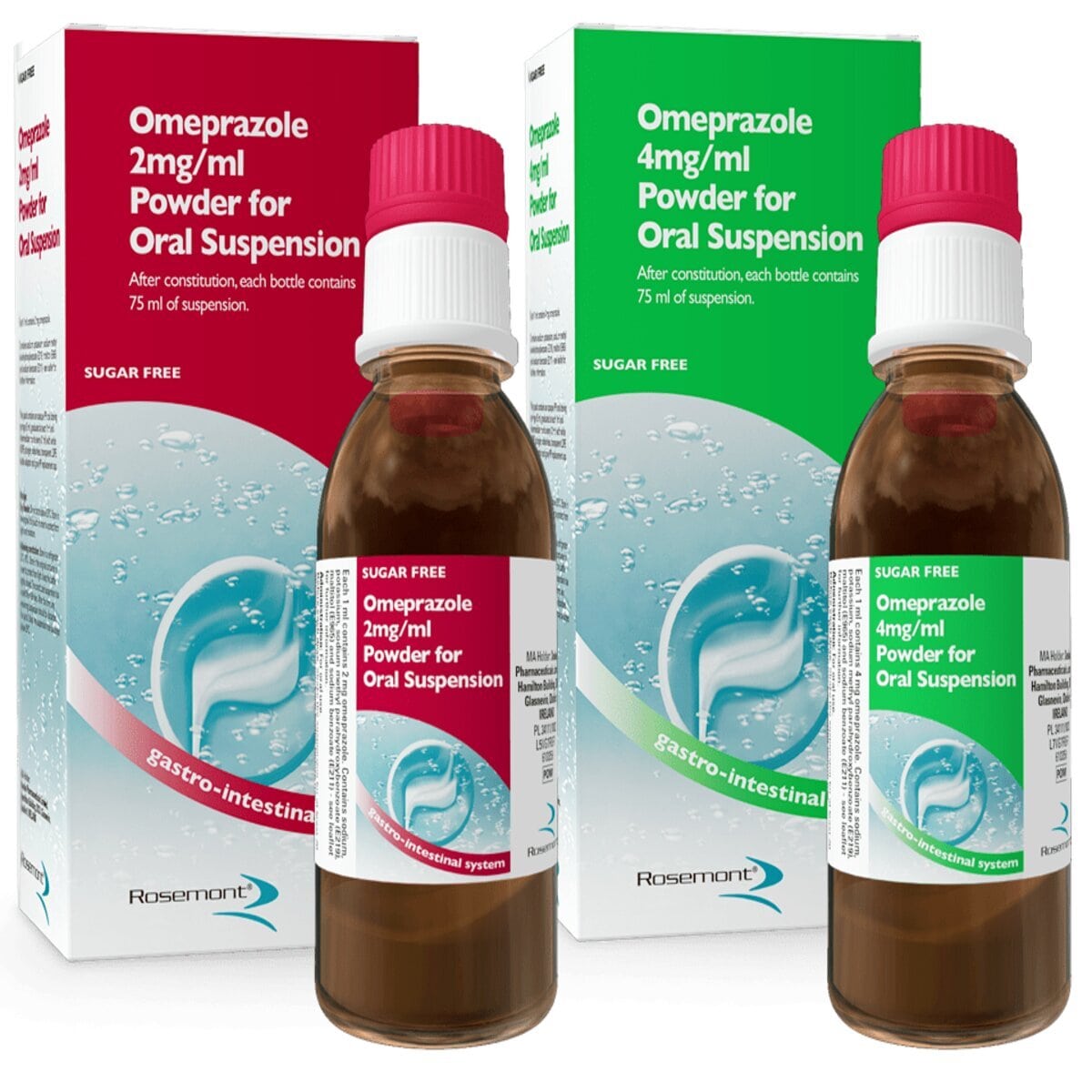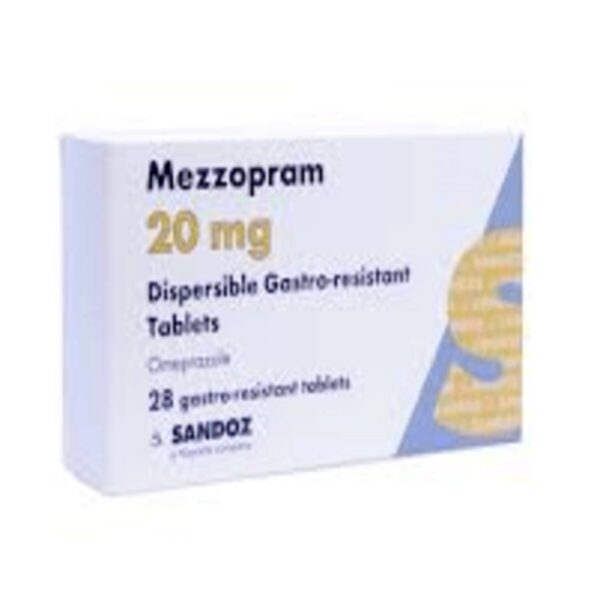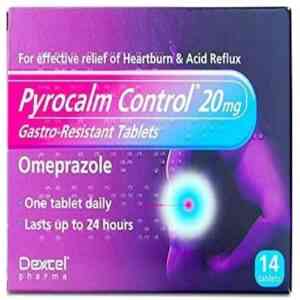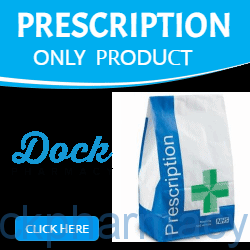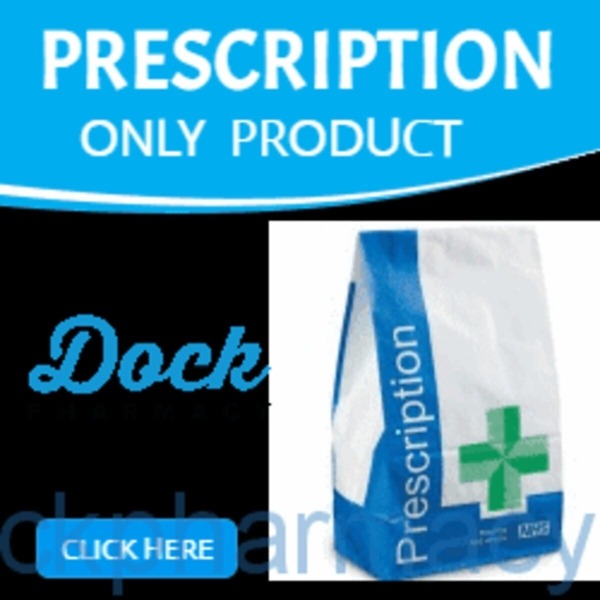- Omeprazole 2mg/ml oral suspension
- Omeprazole 4mg/ml oral suspension
- Description
- Additional Information
- Brand
- How To Use
- Product Details
- Side Effects
- Ingredients
- How to Store
- Patient Information leaflet
- Questions & Answers
Omeprazole Oral Suspension, 75ml
Introducing Omeprazole Oral Suspension, the innovative new way to treat heartburn and acid reflux. Omeprazole Oral Suspension contains the active ingredient omeprazole, which belongs to a group of medicines known as proton pump inhibitors. These medicines work by reducing the amount of acid that your stomach produces.
Omeprazole Oral Suspension is an effective and convenient treatment for heartburn and acid reflux. It is easy to take, and you only need to take it once a day. Omeprazole Oral Suspension is available without a prescription, so you can get relief from heartburn and acid reflux whenever you need it.
If you suffer from heartburn or acid reflux, don’t suffer any longer. Try Omeprazole Oral Suspension today.
Omeprazole Oral Suspension is available in 2 strengths: 2mg/ml and 4mg/ml
Omeprazole oral suspension is commonly used to treat the following conditions:
In adults:
- ‘Gastro-oesophageal reflux disease’ (GORD). This is where acid from the stomach escapes into the gullet (the tube which connects your throat to your stomach) causing pain, inflammation and heartburn.
- Ulcers in the upper part of the intestine (duodenal ulcer) or stomach (gastric ulcer).
- Ulcers which are infected with bacteria called ‘Helicobacter pylori’. If you have this condition, your doctor may also prescribe antibiotics to treat the infection and allow the ulcer to heal.
- Ulcers caused by medicines called NSAIDs (Non-Steroidal Anti-Inflammatory Drugs). Omeprazole can also be used to stop ulcers from forming if you are taking NSAIDs.
In children:
Children over 1 month of age:
- ‘Gastro-oesophageal reflux disease’ (GORD). This is where acid from the stomach escapes into the gullet (the tube which connects your throat to your stomach) causing pain, inflammation and heartburn.
In children, the symptoms of the condition can include the return of stomach contents into the mouth (regurgitation), being sick (vomiting) and poor weight gain.
Children over 4 years of age and adolescents:
- Ulcers which are infected with bacteria called ‘Helicobacter pylori’. If your child has this condition, your doctor may also prescribe antibiotics to treat the infection and allow the ulcer to heal.
Your doctor will tell you why you have been given this medicine.
Omeprazole Oral Suspension can be used to treat cats and dogs
Omeprazole Oral Suspension Reviews
After using Omeprazole Oral Suspension, it’s helpful to let others know about your experience. Reviews of an item help other users know that medicines received have helped the condition it is claimed for, how well the treatment worked or any issues to be aware of. We invite our users to leave a review of both their treatment and of the service provided. Click on the reviews tab to see if there has been feedback on this item.
What is the price of Omeprazole Oral Suspension?
The price of Omeprazole Oral Suspension starts from £162.40
Where can you buy Omeprazole Oral Suspension?
You can buy Omeprazole Oral Suspension at Dock Pharmacy Essex UK, UK Online Pharmacy.
Can you buy Omeprazole Oral Suspension Over the counter?
Omeprazole Oral Suspension is not available to buy over the counter. You need a prescription to buy Omeprazole Oral Suspension
| Strength | 2mg/ml, 4mg/ml |
|---|---|
Brand
Omeprazole
How To Use
How to take Omeprazole Oral Suspension
Always take this medicine exactly as your doctor or pharmacist has told you. Check with your doctor or pharmacist if you are not sure.
Your doctor will tell you how much medicine to take and how long to take it for. This will depend on your condition and how old you are.
For doses of ≤ 15mg, the 2 mg/ml strength is recommended. For doses of 20mg or 40mg, the 4mg/ml strength is suitable.
The recommended dose is given below.
Use in adults
To treat symptoms of GORD such as heartburn and acid regurgitation:
- If your doctor has found that your food pipe (gullet) has been slightly damaged, the recommended dose is 20 mg once a day for 4-8 weeks. Your doctor may tell you to take a dose of 40 mg for a further 8 weeks if your gullet has not yet healed.
- The recommended dose once the gullet has healed is 10 mg once a day.
- If your gullet has not been damaged, the usual dose is 10 mg once a day.
To treat ulcers in the upper part of the intestine (duodenal ulcer):
- The recommended dose is 20 mg once a day for 2 weeks. Your doctor may tell you to take the same dose for a further 2 weeks if your ulcer has not yet healed.
- If the ulcers do not fully heal, the dose can be increased to 40 mg once a day for 4 weeks.
To treat ulcers in the stomach (gastric ulcer):
- The recommended dose is 20 mg once a day for 4 weeks. Your doctor may tell you to take the same dose for a further 4 weeks if your ulcer has not yet healed.
- If the ulcers do not fully heal, the dose can be increased to 40 mg once a day for 8 weeks.
To prevent the duodenal and stomach ulcers from coming back:
- The recommended dose is 10 mg or 20 mg once a day. Your doctor may increase the dose to 40 mg once a day.
To treat duodenal and stomach ulcers caused by NSAIDs (Non-Steroidal Anti-Inflammatory Drugs):
- The recommended dose is 20 mg once a day for 4–8 weeks.
To prevent duodenal and stomach ulcers if you are taking NSAIDs:
- The recommended dose is 20 mg once a day.
To treat ulcers caused by Helicobacter pylori infection and to stop them coming back:
- The recommended dose is 20 mg Omeprazole twice a day for one week.
- Your doctor will also tell you to take two antibiotics among amoxicillin, clarithromycin and metronidazole.
Use in children and adolescents
To treat symptoms of GORD such as heartburn and acid regurgitation:
- Children over 1 month of age may take Omeprazole. The dose for children is based on the child’s weight and the doctor will decide the correct dose based on the following:
Age: 1 month to 1 year of age, posology: 1 mg/kg once daily. Doses above 1.5 mg/kg/day have not been studied.
Age: ≥ 1 year of age, weight: 10-20 kg, posology: 10 mg once daily. The dose can be increased to 20 mg once daily if needed.
Age: ≥ 2 years of age, weight: > 20 kg, posology: 20 mg once daily. The dose can be increased to 40 mg once daily if needed.
* Individual dose measurements ≤ 2ml are not indicated
** The 2 mg/ml and 4 mg/ml strengths are equivalent with respect to buffering capacity (same amount of buffer on a ml basis).
To treat ulcers caused by Helicobacter pylori infection and to stop them coming back:
- Children aged over 4 years may take Omeprazole. The dose for children is based on the child’s weight and the doctor will decide the correct dose.
- Your doctor will also prescribe two antibiotics called amoxicillin and clarithromycin for your child.
Taking this medicine
- This medicine contains 10mg (Omeprazole 2mg/ml Oral Suspension) in each 5 millilitre (5ml) of suspension.
- Take this medicine by mouth.
- It is recommended that you take your dose of medicine in the morning.
- This medicine should be taken on an empty stomach, at least 30 minutes before a meal.
- Use the dosing device provided to measure the correct dose (see Measuring your dose).
- A glass of water may be taken after taking the dose.
- This medicine can also be administered via nasogastric (NG) or percutaneous endoscopic gastrostomy (PEG) tubes.
- Instructions for use via NG or PEG tube:
- Ensure that the enteral feeding tube is free from obstruction before administration.
- Flush the enteral tube with 5mL of water
- Administer the required dose of Omeprazole Oral Suspension with a suitable measuring device.
- Flush the enteral tube with 5mL of water
This product can be used with Polyurethane and PVC nasogastric (NG) and percutaneous endoscopic gastrostomy (PEG) tubes of size 6 Fr to 16 Fr. For the smallest diameter tubes (6 Fr) a smaller flush volume of 2ml may be used in very young children
Preparing and taking the suspension
The container is two compartment system containing powder both in the cap and in the bottle. The two powders first need to be combined and are then to be constituted in water. A red mixing disk will drop into the medicine to help mix the powders and also mix the constituted suspension after addition of the water. It should remain in the bottle. The red cap is replaced by a grey cap after constitution. It is recommended that a pharmacist constitutes Omeprazole Oral Suspension prior to its dispensing to the patient.
Instructions for initial constitution.
Combination of powder in cap and bottle
- Shake the bottle for 10 seconds to loosen the powder.
- Twist the red cap anti-clockwise (see arrow on cap) until the seal is broken to release the powder in the red cap into the bottle.
- Twist the red cap back to the original position, securely fastening the red cap onto the bottle.
Constitution of the powder
- Shake the bottle vigorously for ten seconds to mix the powders.
- Tap the base of the bottle three times on a hard horizontal surface to make sure all powder is in the bottle and not in the cap.
- Remove the red cap from the bottle.
- Add 64ml of water by using a suitable measuring device up to the line on the label.
- Securely fasten the red cap onto the bottle and shake vigorously for 30 seconds.
Placement of syringe adaptor
- Remove the red cap and red ring and throw away.
- Insert the colourless, transparent Bottle Adaptor and replace the red cap with the grey plastic screw-cap.
- Leave for fifteen minutes for product to reach final consistency.
Measuring your dose
Instructions for use of the syringe
1. Shake for 20 seconds immediately prior to each use
2. To open the bottle, press the grey cap down and turn it anti-clockwise (Figure 1). Do not remove the white cap portion.
3. Take the syringe and put it into the adaptor opening (Figure 2).
4. Turn the bottle upside down (Figure 3).
5. Fill the syringe with a small amount of suspension by pulling the plunger down (Figure 4A). Then push the plunger upward in order to remove any possible bubbles (Figure 4B). Finally, pull the plunger down to the graduation mark corresponding to the quantity in millilitres (ml) prescribed by your doctor. The top flat edge of the piston should be in line with the graduation mark you are measuring to (Figure 4C).
6. Turn the bottle the right way up (Figure 5A).
7. Remove the syringe from the adaptor (Figure 5B).
8. Put the end of the syringe into the mouth of the patient and push the plunger slowly back in to take the medicine. The suspension will be released slowly while the last portion will be released faster due to reduced resistance in the tip of the syringe.
9. Wash the syringe with water and let it dry before you use it again (Figure 6).
10. Close the bottle with the grey plastic screw cap – leave the bottle adaptor in the bottle.
Note: It is normal to have the red plastic disc in the suspension during use; do not attempt to remove it.
If you take more Omeprazole Oral Suspension than you should
If you take more of this medicine than prescribed by your doctor, talk to your doctor or pharmacist straight away.
If you forget to take Omeprazole Oral Suspension
If you forget to take a dose, take it as soon as you remember it. However, if it is almost time for your next dose, skip the missed dose. Do not take a double dose to make up for a forgotten dose.
If you stop taking Omeprazole Oral Suspension
Do not stop taking Omeprazole without first talking to your doctor or pharmacist.
If you have further questions on the use of this medicine, ask your doctor or pharmacist.
Product Details
What you need to know before you take Omeprazole Oral Suspension
Do not take Omeprazole Oral Suspension
- If you are allergic to omeprazole or any of the other ingredients of this medicine (listed in section 6).
- If you are allergic to medicines containing other proton pump inhibitors (eg pantoprazole, lansoprazole, rabeprazole, esomeprazole).
- If you are taking a medicine containing nelfinavir (used for HIV infection)
Do not take this medicine if any of the above apply to you. If you are not sure, talk to your doctor or pharmacist before taking Omeprazole Oral Suspension.
Warnings and precautions
Talk to your doctor or pharmacist before taking Omeprazole.
Omeprazole may hide the symptoms of other diseases. Therefore, if any of the following happen to you before you start taking Omeprazole Oral Suspension or while you are taking it, talk to your doctor straight away:
- You lose a lot of weight for no reason and have problems swallowing.
- You get stomach pain or indigestion.
- You begin to vomit food or blood.
- You pass black stools (blood-stained faeces).
- You experience severe or persistent diarrhoea, as omeprazole has been associated with a small increase in infectious diarrhoea.
- You have severe liver problems.
- You have ever had a skin reaction after treatment with a medicine similar to Omeprazole that reduces stomach acid
- You are due to have a specific blood test (Chromogranin A)
If you take Omeprazole on a long-term basis (longer than 1 year) your doctor will probably keep you under regular surveillance. You should report any new and exceptional symptoms and circumstances whenever you see your doctor.
Taking a proton pump inhibitor like Omeprazole, especially over a period of more than one year, may slightly increase your risk of fracture in the hip, wrist or spine. Tell your doctor if you have osteoporosis or if you are taking corticosteroids (which can increase the risk of osteoporosis).
If you get a rash on your skin, especially in areas exposed to the sun tell your doctor as soon as you can, as you may need to stop your treatment with Omeprazole. Remember to also mention any other ill-effects like pain in your joints.
Children
Some children with chronic illnesses may require long-term treatment although it is not recommended. Do not give this medicine to children under 1 month of age.
Other medicines and Omeprazole Oral Suspension
Tell your doctor or pharmacist if you are taking, have recently taken, or might take any other medicines. This includes medicines that you buy without a prescription. This is because Omeprazole can affect the way some medicines work and some medicines can have an effect on Omeprazole.
Do not take Omeprazole if you are taking a medicine containing nelfinavir (used to treat HIV infection).
Tell your doctor or pharmacist if you are taking any of the following medicines:
- Ketoconazole, itraconazole, posaconazole or voriconazole (used to treat infections caused by a fungus)
- Digoxin (used to treat heart problems)
- Diazepam (used to treat anxiety, relax muscles or in epilepsy)
- Phenytoin (used in epilepsy). If you are taking phenytoin, your doctor will need to monitor you when you start or stop taking Omeprazole
- Medicines that are used to thin your blood, such as warfarin or other vitamin K blockers. Your doctor may need to monitor you when you start or stop taking Omeprazole
- Rifampicin (used to treat tuberculosis)
- Atazanavir (used to treat HIV infection)
- Tacrolimus (in cases of organ transplantation)
- St John’s wort (Hypericum perforatum) (used to treat mild depression)
- Cilostazol (used to treat intermittent claudication)
- Saquinavir (used to treat HIV infection)
- Clopidogrel (used to prevent blood clots (thrombi))
- Erlotinib (used to treat cancer)
- Methotrexate (a chemotherapy medicine used in high doses to treat cancer) – if you are taking a high dose of methotrexate, your doctor may temporarily stop your Omeprazole treatment.
If your doctor has prescribed the antibiotics amoxicillin and clarithromycin as well as Omeprazole to treat ulcers caused by Helicobacter pylori infection, it is very important that you tell your doctor about any other medicines you are taking.
Omeprazole Oral Suspension with food and drink
You should take Omeprazole Oral Suspension without food on an empty stomach.
Pregnancy, breastfeeding and fertility
If you are pregnant or breastfeeding, think you may be pregnant or are planning to have a baby, ask your doctor or pharmacist for advice before taking this medicine.
Omeprazole is excreted in breast milk but is not likely to influence the child when therapeutic doses are used. Your doctor will decide whether you can take Omeprazole if you are breastfeeding.
Driving and using machines
Omeprazole is not likely to affect your ability to drive or use any tools or machines. Side effects such as dizziness and visual disturbances may occur (see section 4). If affected, you should not drive or operate machinery.
Omeprazole Oral Suspension contains maltitol, potassium, sodium, sodium methyl parahydroxybenzoate and sodium benzoate.
- Maltitol. If you have been told by your doctor that you have an intolerance to some sugars, contact your doctor before taking this medicinal product.
- Sodium. This medicine contains 17.2 mg of sodium (main component of cooking/table salt) in each ml or 86 mg of sodium per 5ml dose. This 5ml dose is equivalent to 4.3% of the recommended maximum daily dietary intake of sodium for an adult.
- Potassium. This medicine contains 1.39 mmol (or 54.3 mg) potassium per ml or 6.95 mmol (or 271.5 mg) potassium per 5ml dose. To be taken into consideration by patients with reduced kidney function or patients on a controlled potassium diet.
- Sodium methyl parahydroxybenzoate. May cause allergic reactions (possibly delayed).
- Sodium benzoate. This medicine contains 25 mg sodium benzoate in each 5ml dose.
Side Effects
Possible side effects
Like all medicines, this medicine can cause side effects, although not everybody gets them.
If you notice any of the following rare but serious side effects, stop taking Omeprazole Oral Suspension and contact a doctor immediately:
- Sudden wheezing, swelling of your lips, tongue and throat or body, rash, fainting or difficulties in swallowing (severe allergic reaction).
- Reddening of the skin with blisters or peeling. There may also be severe blisters and bleeding in the lips, eyes, mouth, nose and genitals. This could be ‘Stevens-Johnson syndrome’ or ‘toxic epidermal necrolysis’.
- Yellow skin, dark urine and tiredness which can be symptoms of liver problems.
Other side effects include:
Common side effects (may affect up to 1 in 10 people)
- Headache.
- Effects on your stomach or gut: diarrhoea, stomach pain, constipation, wind (flatulence).
- Feeling sick (nausea) or being sick (vomiting).
- Benign polyps in the stomach.
Uncommon side effects (may affect up to 1 in 100 people)
- Swelling of the feet and ankles.
- Disturbed sleep (insomnia).
- Dizziness, tingling feelings such as “pins and needles”, feeling sleepy.
- Spinning feeling (vertigo).
- Changes in blood tests that check how the liver is working.
- Skin rash, lumpy rash (hives) and itchy skin.
- Generally feeling unwell and lacking energy.
Rare side effects (may affect up to 1 in 1,000 people)
- Blood problems such as a reduced number of white cells or platelets. This can cause weakness, bruising or make infections more likely.
- Allergic reactions, sometimes very severe, including swelling of the lips, tongue and throat, fever, wheezing.
- Low levels of sodium in the blood. This may cause weakness, being sick (vomiting) and cramps.
- Feeling agitated, confused or depressed.
- Taste changes.
- Eyesight problems such as blurred vision.
- Suddenly feeling wheezy or short of breath (bronchospasm).
- Dry mouth.
- An inflammation of the inside of the mouth.
- An infection called “thrush” which can affect the gut and is caused by a fungus.
- Liver problems, including jaundice which can cause yellow skin, dark urine, and tiredness.
- Hair loss (alopecia).
- Skin rash on exposure to sunshine.
- Joint pains (arthralgia) or muscle pains (myalgia).
- Severe kidney problems (interstitial nephritis).
- Increased sweating.
Very rare side effects (may affect up to 1 in 10,000 people)
- Changes in blood count including agranulocytosis (lack of white blood cells).
- Aggression.
- Seeing, feeling or hearing things that are not there (hallucinations).
- Severe liver problems leading to liver failure and inflammation of the brain.
- Sudden onset of a severe rash or blistering or peeling skin. This may be associated with a high fever and joint pains (Erythema multiforme, Stevens-Johnson syndrome, toxic epidermal necrolysis).
- Muscle weakness.
- Enlarged breasts in men.
Not known (frequency cannot be estimated from the available data)
- Inflammation in the gut (leading to diarrhoea).
- If you are on Omeprazole for more than three months it is possible that the levels of magnesium in your blood may fall. Low levels of magnesium can be seen as fatigue, involuntary muscle contractions, disorientation, convulsions, dizziness or increased heart rate. If you get any of these symptoms, please tell your doctor promptly. Low levels of magnesium can also lead to a reduction in potassium or calcium levels in the blood. Your doctor may decide to perform regular blood tests to monitor your levels of magnesium.
- Rash, possibly with pain in the joints.
Omeprazole Oral Suspension may in very rare cases affect the white blood cells leading to immune deficiency. If you have an infection with symptoms such as fever with a severely reduced general condition or fever with symptoms of a local infection such as pain in the neck, throat or mouth or difficulties in urinating, you must consult your doctor as soon as possible so that a lack of white blood cells (agranulocytosis) can be ruled out by a blood test. It is important for you to give information about your medicine at this time.
Reporting of side effects
If you get any side effects, talk to your doctor or pharmacist. This includes any possible side effects not listed in this leaflet. You can also report side effects directly via the Yellow Card Scheme at: www.mhra.gov.uk/yellowcard or search for MHRA Yellow Card in the Google Play or Apple App Store.
By reporting side effects you can help provide more information on the safety of this medicine.
Ingredients
What Omeprazole Oral Suspension contains
- The active substance is omeprazole. Each ml of oral suspension contains 2mg of omeprazole
- The other ingredients are Sodium hydrogen carbonate (E500), Potassium hydrogen carbonate (E501), Sodium alginate (E401), Maltitol (E965), Mannitol (E421), Sucralose (E955), Xanthan gum (E415), Natural Vanilla Flavouring containing Maltodextrin (Maize) and Natural Mint Flavouring containing Gum Arabic / Acacia Gum (E414), Titanium dioxide (E171), Sodium benzoate (E211), Sodium methyl parahydroxybenzoate (E219)
How to Store
How to store Omeprazole Oral Suspension
- Keep this medicine out of the sight and reach of children.
- Do not use this medicine after the expiry date which is stated on the carton after EXP. The expiry date refers to the last day of that month.
- Dry Powders: Do not store above 25°C. Store in the original foil pouch in order to protect from light and moisture.
- Following constitution: Store in a refrigerator (2°C – 8°C). Store in the original container in order to protect from light. Keep the bottle tightly closed. The constituted suspension has a shelf life of 28 days. After this time, any remaining suspension should be discarded. For up to 2 days the suspension may be stored below 25°C.
- Do not use Omeprazole Oral Suspension if you notice anything wrong with the appearance of the medicine (See section 6). Tell your pharmacist.
- Do not throw away any medicines via wastewater or household waste. Ask your pharmacist how to throw away medicines you no longer use. These measures will help to protect the environment.
Patient Information leaflet
Click here for the Patient Information leaflet
Please read before using the product
Questions and answers of the customers
There are no questions yet, be the first to ask something for this product.
You Might Also Like
£3.99 – £4.50
£3.99 – £4.50
- Availability: in stock
£11.36 – £20.10
Omeprazole Tab 10mg
Learn More£11.36 – £20.10
- Availability: in stock
Original price was: £12.66.£10.45Current price is: £10.45.
Original price was: £12.66.£10.45Current price is: £10.45.
- Availability: in stock
Original price was: £10.99.£9.99Current price is: £9.99.
- Short-term treatment of reflux symptoms (e.g. heartburn, acid regurgitation) in adults.
- Over the counter Omeprazole 20mg.
- One A Day dosage
Original price was: £10.99.£9.99Current price is: £9.99.
- Availability: in stock
Other Products From This Seller
Original price was: £31.00.£10.95Current price is: £10.95.
Chopard Wish Eau de Parfum 30ml Sweet and Oriental Fragrance for Women Indulge in elegance with Chopard Wish Eau de Parfum, 30ml, a sweet and oriental fragrance for women that exudes sophistication and charm. This luxurious scent by Chopard is inspired by the allure of wishes and dreams, blending warm and sensual notes for a […]
Learn MoreOriginal price was: £31.00.£10.95Current price is: £10.95.
- Availability: in stock
Original price was: £84.00.£26.95Current price is: £26.95.
Vera Wang Lovestruck Eau de Parfum 100ml Romantic Floral and Feminine Fragrance Celebrate romance and femininity with Vera Wang Lovestruck Eau de Parfum, 100ml, a romantic floral fragrance for women inspired by love at first sight. This enchanting scent captures the essence of passion and charm with a blend of delicate florals and sweet fruity […]
Learn MoreOriginal price was: £84.00.£26.95Current price is: £26.95.
- Availability: in stock
Original price was: £25.00.£9.95Current price is: £9.95.
Gloria Vanderbilt Vanderbilt EDT Spray, 100ml Timeless Floral Elegance Embrace timeless elegance with Gloria Vanderbilt Vanderbilt Eau De Toilette Spray, 100ml, a sophisticated floral fragrance for women that captures grace, femininity, and charm. Designed for confident and classic women, this iconic scent by Gloria Vanderbilt combines delicate floral notes with warm undertones for a long-lasting […]
Learn MoreOriginal price was: £25.00.£9.95Current price is: £9.95.
- Availability: in stock
Original price was: £34.00.£15.95Current price is: £15.95.
Elizabeth Arden Splendor Eau De Parfum, 125 ml Sophisticated Floral Fragrance Indulge in timeless elegance with Elizabeth Arden Splendor Eau De Parfum, 125ml, a sophisticated floral fragrance for women that exudes grace and charm. Inspired by moments of pure splendor, this iconic scent by Elizabeth Arden combines floral and woody notes for a captivating and […]
Learn MoreOriginal price was: £34.00.£15.95Current price is: £15.95.
- Availability: in stock
Original price was: £44.00.£19.95Current price is: £19.95.
Elizabeth Arden Red Door Eau De Toilette Spray 50ml Timeless Floral Elegance Step into timeless elegance with Elizabeth Arden Red Door Eau De Toilette Spray, 50ml, a classic floral fragrance for women that has become an icon of sophistication. Inspired by the legendary Red Door Spa, this luxurious scent captures the essence of femininity with […]
Learn MoreOriginal price was: £44.00.£19.95Current price is: £19.95.
- Availability: in stock
Original price was: £55.00.£19.95Current price is: £19.95.
Estee Lauder Pleasures EDP 30ml Fresh and Floral Fragrance for Women Experience the timeless elegance of Estee Lauder Pleasures Eau de Parfum, 30ml, a fresh and floral fragrance for women that captures the beauty of life’s simplest pleasures. This classic scent by Estee Lauder is designed for modern, sophisticated women who appreciate light, airy fragrances. […]
Learn MoreOriginal price was: £55.00.£19.95Current price is: £19.95.
- Availability: in stock
Original price was: £34.99.£19.95Current price is: £19.95.
Sarah Jessica Parker Lovely You Eau de Parfum Spray 100ml Sophisticated Floral and Musky Fragrance Step into timeless elegance with Sarah Jessica Parker Lovely You Eau de Parfum Spray, 100ml, a floral and musky fragrance for women that embodies sophistication and modernity. Created by Sarah Jessica Parker, this iconic scent celebrates femininity with a delicate […]
Learn MoreOriginal price was: £34.99.£19.95Current price is: £19.95.
- Availability: in stock
Original price was: £47.00.£29.95Current price is: £29.95.
Kenzo Flower Eau De Toilette Spray 30ml Fresh and Floral Fragrance for Women Experience the delicate beauty of nature with Kenzo Flower Eau De Toilette Spray, 30ml, a fresh and floral fragrance for women inspired by the elegance of the red poppy. This iconic scent combines floral and powdery notes to create a delicate and […]
Learn MoreOriginal price was: £47.00.£29.95Current price is: £29.95.
- Availability: in stock
Original price was: £47.00.£29.95Current price is: £29.95.
Jimmy Choo Eau de Parfum 40ml Sweet and Floral Fragrance for Women Step into a world of luxury and confidence with Jimmy Choo Eau de Parfum, 40ml, a sweet and floral fragrance for women that embodies modern glamour. Designed for women who exude confidence and style, this Jimmy Choo perfume for women blends fruity and […]
Learn MoreOriginal price was: £47.00.£29.95Current price is: £29.95.
- Availability: in stock
Original price was: £52.00.£23.95Current price is: £23.95.
Issey Miyake L’Eau d’Issey Pure Nectar Eau de Parfum Spray, 30ml Floral and Aquatic Elegance Discover the purity of nature with Issey Miyake L’Eau d’Issey Pure Nectar Eau de Parfum Spray, 30ml, a floral and aquatic fragrance for women that encapsulates elegance and sophistication. This Issey Miyake perfume for women combines fresh and delicate notes […]
Learn MoreOriginal price was: £52.00.£23.95Current price is: £23.95.
- Availability: in stock

